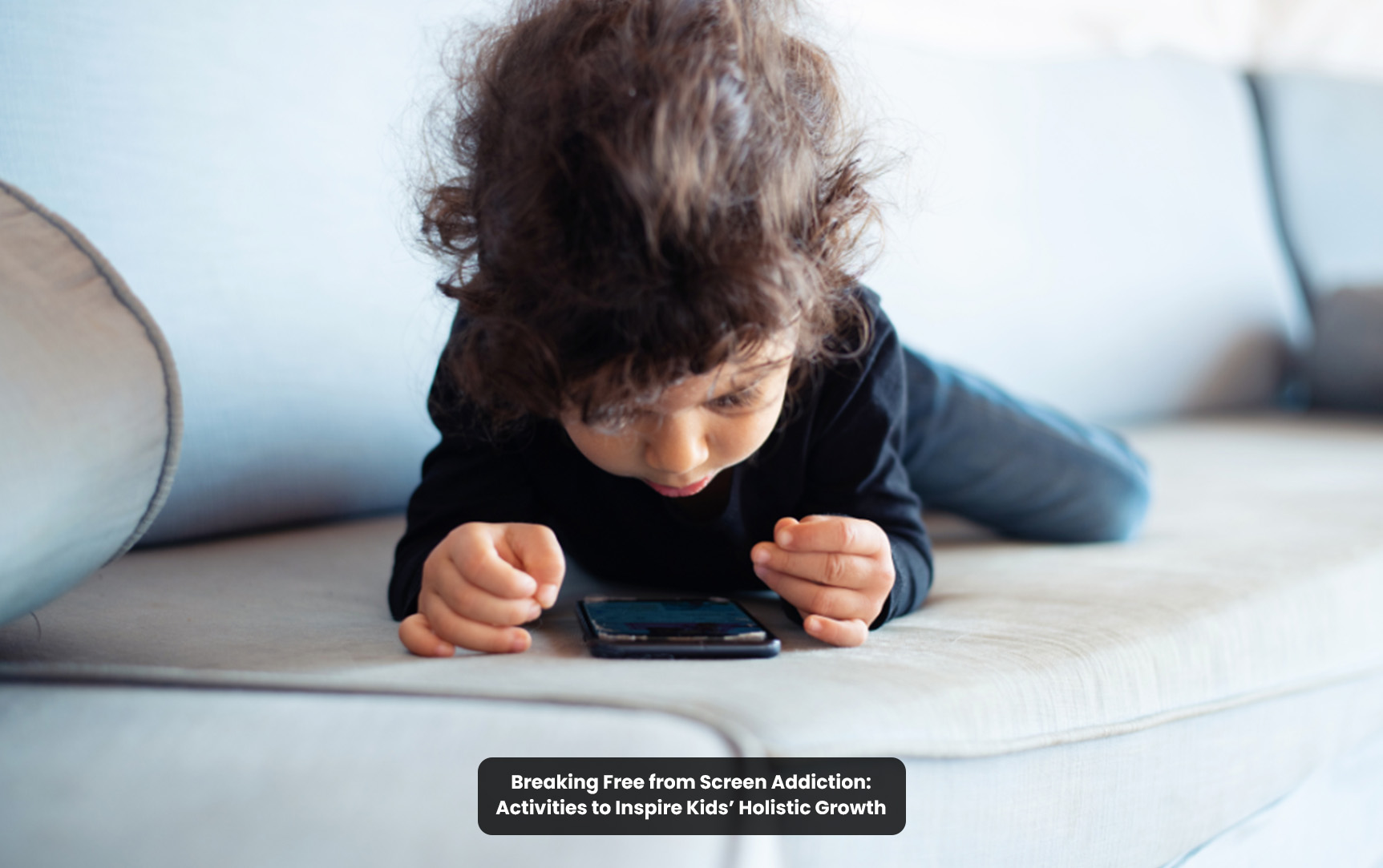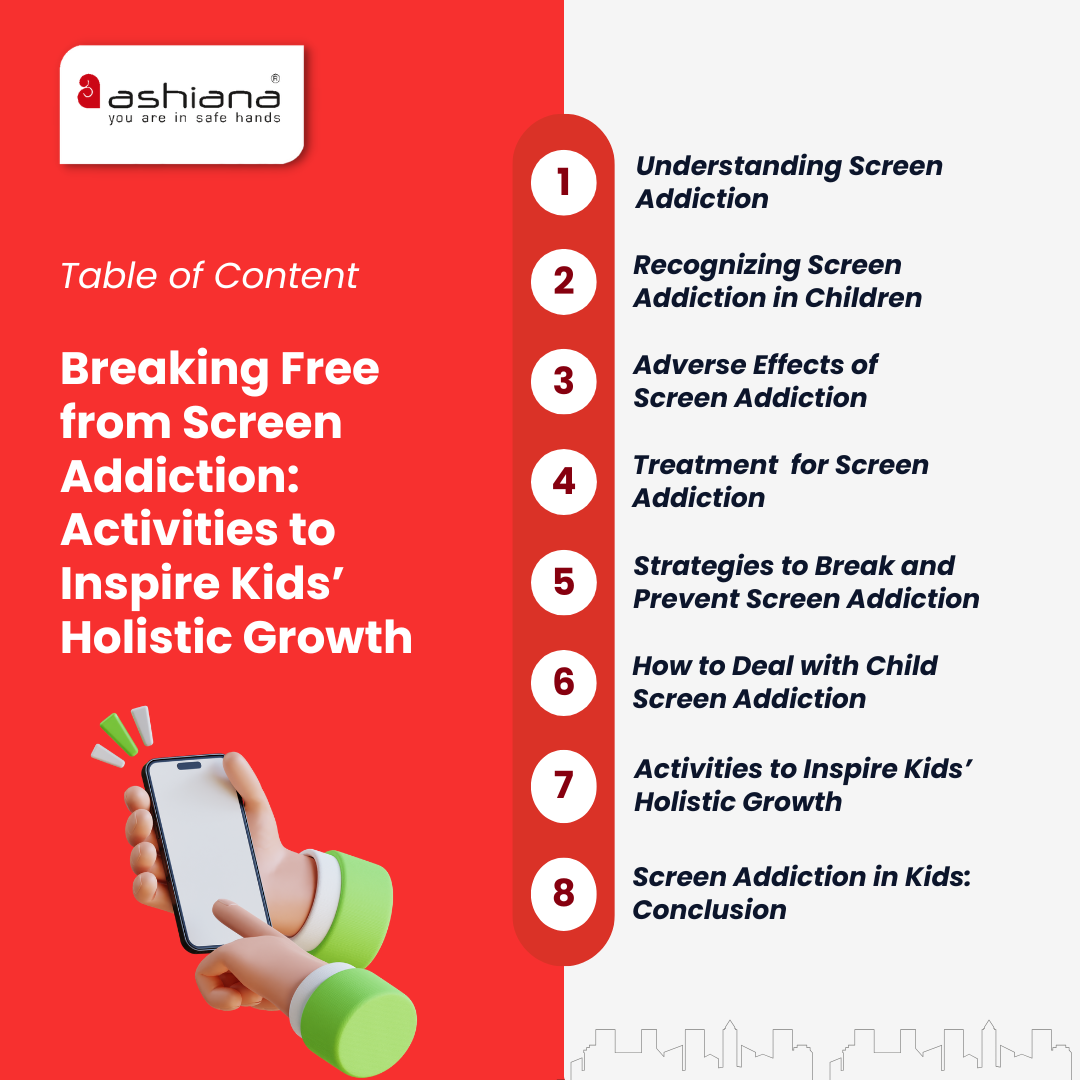

Screen addiction refers to the compulsive overuse of digital devices, often leading to dependency and adverse effects on mental, physical, and social well-being.
Signs include excessive screen time, irritability when screens are unavailable, neglect of other activities, and difficulty reducing screen use.
Screen addiction can cause eye strain, sleep disturbances, anxiety, depression, and social withdrawal.
Set clear limits, encourage alternative activities, model healthy screen habits, and maintain open communication.
Outdoor sports, creative hobbies, family bonding, mindfulness practices, and volunteering are great alternatives to reduce screen dependency and promote growth.
By taking these steps, we can ensure our children grow up with a balanced and healthy relationship with technology.
Ashiana, Ashiana Housing build homes. Homes surrounded by vast green spaces and fresh breeze. Homes cocooned in secured gated complexes. Homes where futures are forged and there are opportunities to grow. And Homes in environments brimming with healthy activity, trust and respect. At heart, we build communities with care.
Other posts by Ashiana
Join 1000+ of fellow readers. Get expert real estate knowledge straight to your inbox absolutely free. Just enter your email address below.